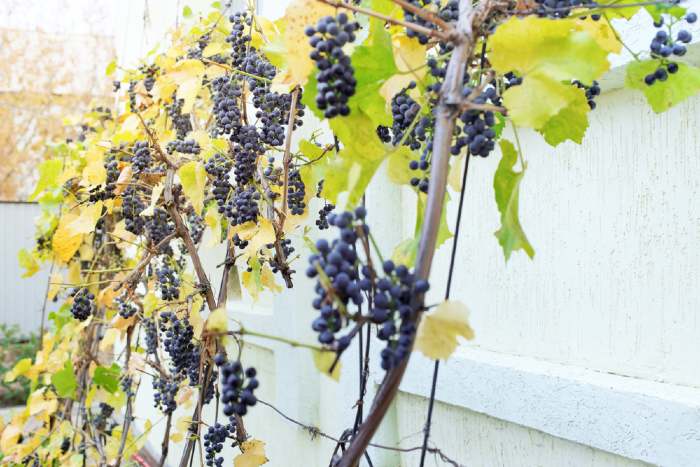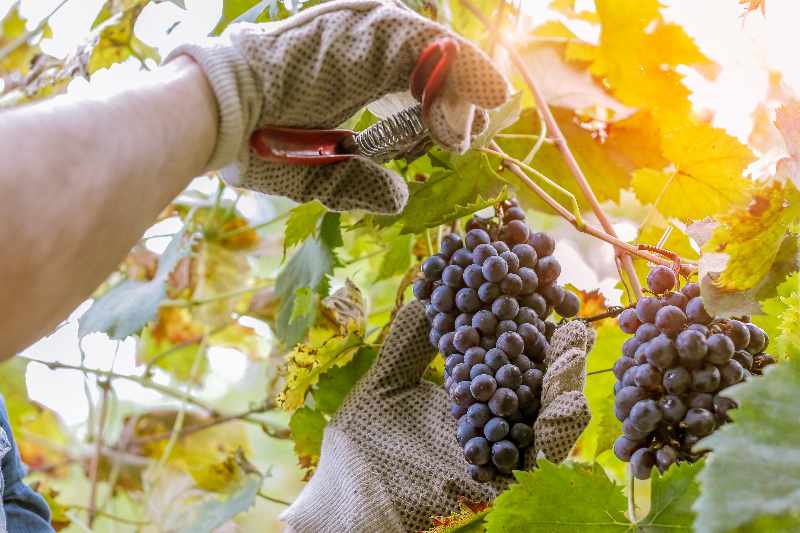How To Grow Grapes In Containers

Make sure to like Living Green and Frugally on Facebook, Shop at Amazon to help support my site and explore our PINTEREST BOARDS for innovative ways you can become self-sufficient.
The prospect of growing grapes in the confined space of an urban setting may seem improbable, but with the right approach and care, you can successfully cultivate these luscious fruits in containers.
Grapes are a versatile and rewarding addition to any garden, patio, or balcony in the USA. Whether you’re a seasoned gardener or a novice enthusiast, this guide will equip you with the knowledge and tips to nurture your grapevines, ultimately yielding a bountiful harvest right at your doorstep.
-
Choosing the Right Container
Selecting the appropriate container is crucial for the success of your grape-growing venture. Opt for large containers with a minimum depth of 24 inches and a capacity of at least 15 gallons. The container should also have adequate drainage holes to prevent waterlogging and root rot.
-
Picking the Right Grape Variety
Different grape varieties thrive in various climates and regions across the USA. Consult with local nurseries or agricultural extension offices to determine which varieties are best suited for your specific location and microclimate. Popular container-friendly grape varieties include ‘Pixie,’ ‘Flame Seedless,’ ‘Thompson Seedless,’ and ‘Black Monukka.’
-
Selecting the Ideal Location
Grapes are sun-loving plants and require a minimum of 6 to 8 hours of direct sunlight daily. Place your containers in a location that receives ample sunlight and is sheltered from strong winds, if possible. Southern or southwestern exposures are usually the best choices.
-
Preparing the Soil Mix
Use a well-draining soil mix specifically designed for container gardening. A suitable blend includes equal parts of potting soil, compost, and perlite or vermiculite. The soil should have a slightly acidic to neutral pH level, ranging from 6.0 to 6.5.
-
Planting Grapevines
Plant your grapevines in early spring after the last frost or in the fall, allowing ample time for root establishment before the winter sets in. Ensure that the container is filled with the prepared soil mix and create a small mound in the center for the grapevine’s root ball. Gently spread the roots over the mound and cover them with soil, leaving the crown just above the surface.
-
Providing Support and Training
Grapevines require sturdy support to grow vertically. Install a trellis or arbor near the container, ensuring it can withstand the weight of mature grapevines. As the grapevine grows, gently train the main stem along the trellis, securing it with soft ties or twine. Prune the vine regularly to encourage growth and fruit production.
-
Watering and Fertilizing
Consistent watering is essential for grapevines, especially during the growing season. Keep the soil consistently moist, but not waterlogged. Consider using a drip irrigation system or a soaker hose to provide consistent moisture to the roots. Apply a balanced liquid fertilizer every two to four weeks during the growing season to promote healthy growth.
-
Managing Pests and Diseases
Regularly inspect your grapevines for any signs of pests or diseases. Common grapevine pests include aphids, spider mites, and grape berry moths. For organic solutions, consider introducing beneficial insects or using neem oil-based sprays. Additionally, keep the area around your containers free of debris and fallen leaves to prevent the spread of diseases.
-
Harvesting Your Grapes
Patience is key when growing grapes, as they generally take 2 to 3 years to bear fruit. Once your grapevines start producing fruit, harvest the bunches when they reach their desired sweetness and color. Gently cut the clusters from the vine using clean pruning shears.

Growing grapes in containers brings the delight of cultivating your own vineyard into the heart of your urban space. With careful selection of varieties, proper care, and patience, you can enjoy a delightful harvest of sweet, juicy grapes right at your doorstep. Embrace the rewarding journey of nurturing these resilient vines, and relish the abundant rewards they offer season after season. Happy grape-growing!